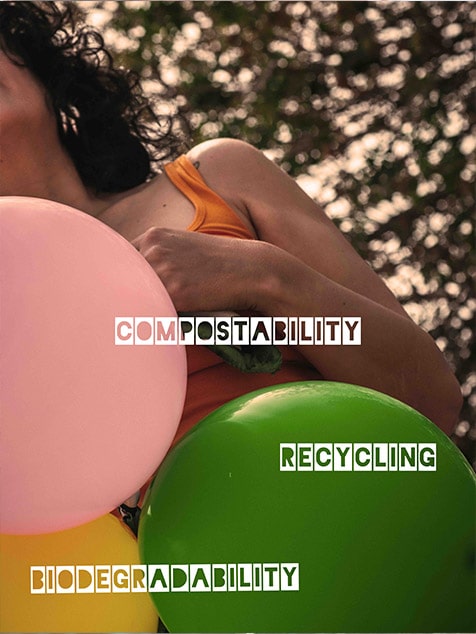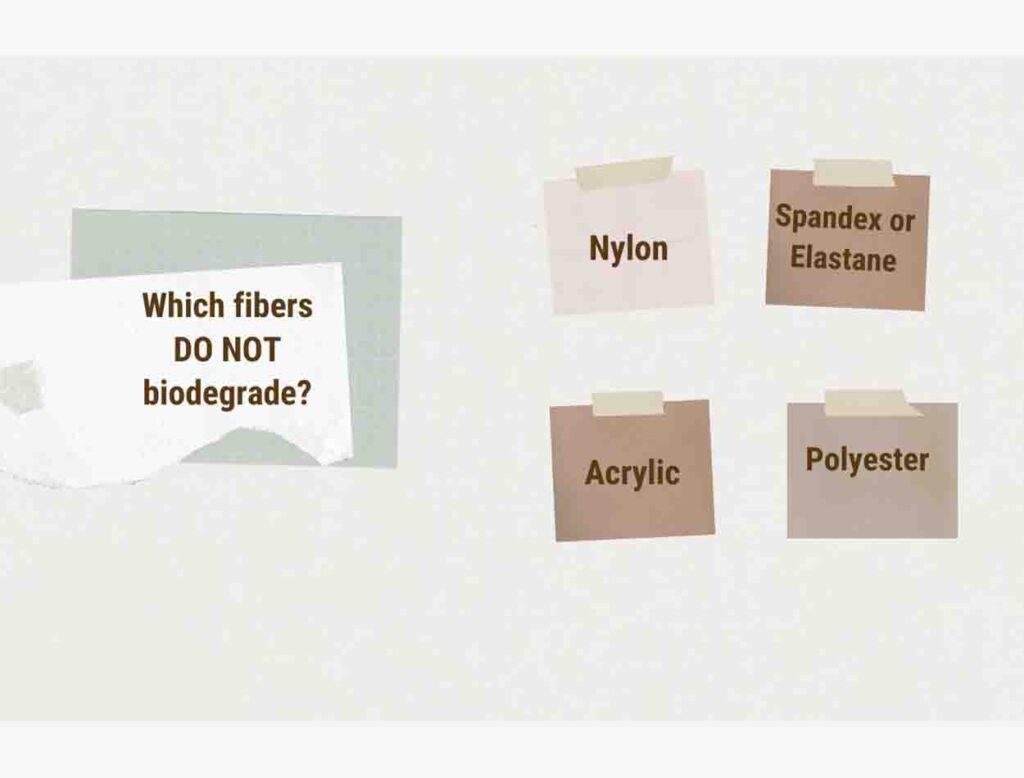
Advancing Sustainability in Textiles: Embracing Recycling, Biodegradability, and Compostability
Recyclability, biodegradability, and compostability have become driving factors in designing textiles that minimize environmental impact and contribute to a circular economy.
In today’s world, sustainability is no longer an option but a necessity. One critical aspect of sustainability in the fashion and textile industry is the end-of-life management of products.

Recyclability: An Essential Principle Decomposition
Recyclability stands as a cornerstone of sustainable textile design.
It offers two primary options: open loop and closed loop recycling. In the open loop, materials find new life in various industries, such as soundproofing or composite materials.
In contrast, the closed loop focuses on creating fibers or new materials from pre- or post-consumer textiles, fostering a circular system.
To facilitate textile-to-textile recyclability, several key design practices must be considered.
Opting for a single-material composition is one of the best choices.
Elastane, a common component in textiles, poses a significant obstacle to recycling. Therefore, it should be limited to no more than 2% to facilitate mechanical recycling.
When blending fibers, it’s preferable to use bi-materials of the same nature, such as combining wool with cashmere for protein fibers or cotton with lyocell for cellulosic fibers.
Complex fabrics, such as jacquard, warp knits, and multi-layer textiles, should be avoided.
Additionally, steer clear of anti-crease finishings, coatings, and flockings, which can complicate the recycling process.
Absolutely, closed-loop recycling is a game-changer for industries, especially in the realm of textiles.
It’s a win-win situation—reducing waste and environmental impact while also saving costs and creating new opportunities.
I’m curious, do you think consumers are becoming more conscious about the sustainability of the products they buy?

Biodegradability: A Natural Approach to Decomposition
Biodegradability is another crucial aspect of sustainable textiles.
A material is considered biodegradable if it can decompose under the action of living organisms without causing harm to the environment.
Raw hides, used in leather production, are naturally biodegradable.
However, the leather itself, after undergoing various treatments during processing, may not be biodegradable.
Some treatments can alter its natural characteristics, rendering it resistant to decomposition.
Biodegradability standards consider threshold, decomposition time, non-toxicity, and absence of heavy metals in products.
These criteria ensure that products claiming biodegradability meet established environmental standards.
It’s worth noting that, in France, the AGEC law now prohibits claims about a product’s biodegradability on the product itself or its packaging.
This regulation aims to prevent misleading information and promote transparency in sustainable product labeling.

Compostability: Enhancing Soil Health
Compostability is an advanced step in the pursuit of sustainable textiles.
Compostable products, once degraded under specific conditions, can act as soil improvers, enhancing soil structure and fertility.
However, compliance with rigorous testing and current standards is essential to ensure the product’s compostability.
Compostability principles present textile prospects, but it’s crucial to note not all products can meet these standards.
Also depends on various factors, including the composition of the material and the conditions under which it decomposes.
Successful compostable textiles can contribute to closing the loop in a truly sustainable fashion industry.
Sustainable textiles involve recycling, biodegradability, and compostability, crucial for minimizing fashion and textile industry environmental impact.
Choosing single-material compositions, minimizing elastane, and avoiding complex fabrics improves textile-to-textile recyclability through sound design practices.
Furthermore, conscious choices in leather tanning and finishing can promote biodegradability while adhering to established standards ensures transparency and credibility in sustainability claims.
As the fashion and textile industry continues to evolve, it is imperative to embrace these principles and drive innovation in sustainable design.
Legislation, such as the AGEC law in France, underscores the importance of responsible environmental claims.
Compostability, though more challenging to achieve, offers exciting possibilities for enriching our soils and promoting circularity.
In a world where sustainability is paramount, the fashion and textile industry must be at the forefront of change, promoting practices that prioritize the planet’s well-being.
Recyclability, biodegradability, and compostability are not merely buzzwords but guiding principles for a more sustainable and eco-conscious future.

Season SS23: Brands and Biodegradable Materials
Recognizing increasingly more signs of the environmental and social impact of clothing, brands and designers are turning to biodegradability as a solution.
They are creating clothes and shoes that break down completely biologically at disposal.
This idea dominates the SS23 season shows, with examples such as Gabriela Hearst’s shoes with biodegradable soles, Peter Do’s TomTex as an alternative to biodegradable leather, and Coperni’s dress made to order from biodegradable fibers and synthetics.
In 2020, Bottega Veneta presented 100% biodegradable rubber boots, while Stella McCartney released biodegradable stretch denim. Billi London represents a solution for the 7,000 tons of waste generated from tights each year only in the UK.
With an innovation in biodegradation, Billi London tights end up in the bin, where ideal anaerobic conditions allow their biodegradability into “biomass and biogas”.
They are made of a nylon that biodegrades in about five years, compared to conventional tights that take 100 years to decompose.
KENT makes plant-based underwear. It partnered with an LA composting unit.
The results showed that their underwear biodegraded in about 90 days and functioned as a source of nutrients for the soil.
*****Cover pic by Artemis Tsipi (www.wonderfoodland.gr)
You may also like
Dimensions in Ndebele Culture
The Transvaal Ndebele form a captivating community with a rich history.Their tradition in wall pai
Candy pink. The color trend for the Fall-Winter 2023-2024 season!
Candy pink is a shade of pink that is often associated with the color of sweet and sugary treats. It
How 3D Fashion Is Reshaping the Way We Design, Show, and Sell Clothes
3D fashion and AI are changing how we design, visualize, and sell clothes — faster, cleaner, with




